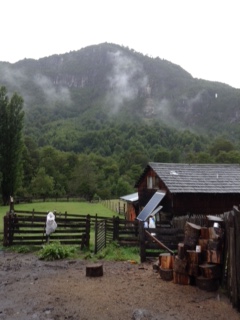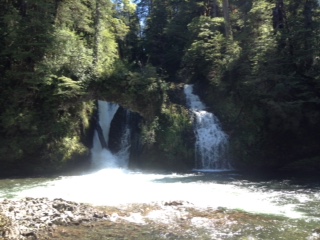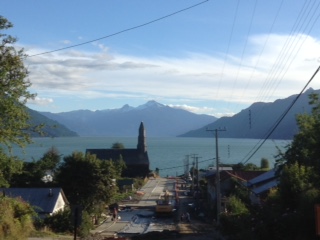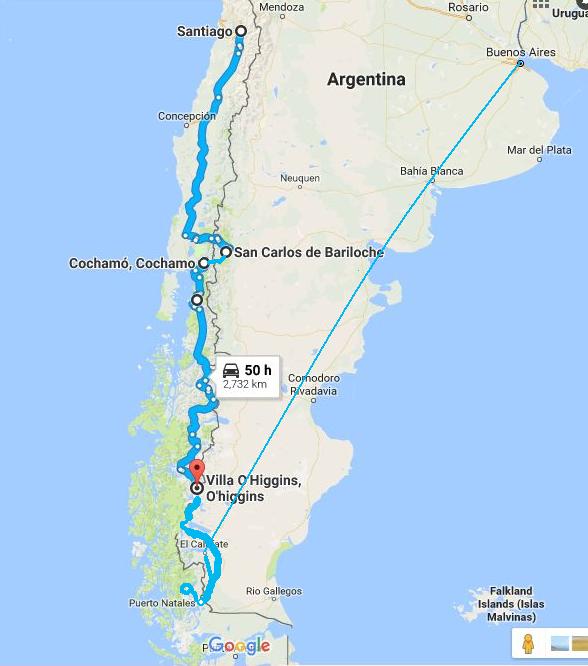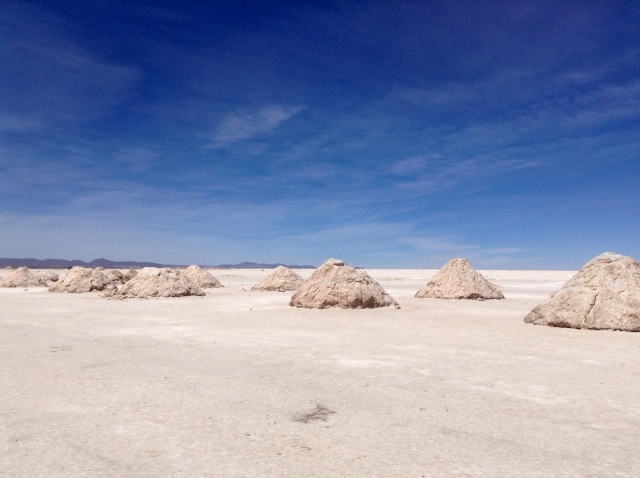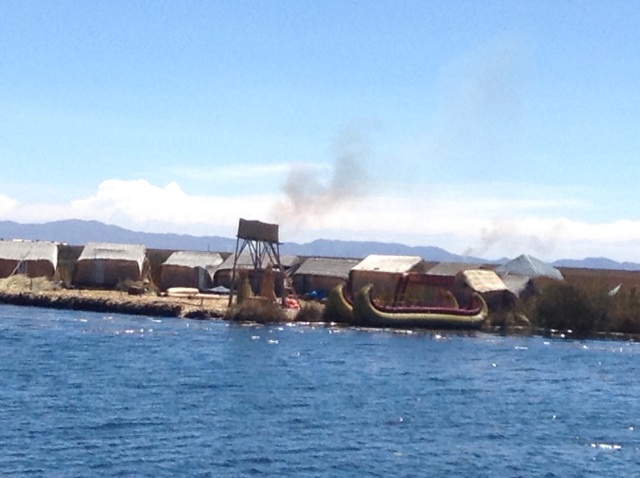Friends, it is getting harder and harder to read the news, especially in a place so far from home. People here keep asking me who I voted for and laughing about Donald Trump, which is a little like being rubbed with sand paper over and over again in the same spot. I’d rather have a real conversation with someone else who also reads the news or take a mental break and enjoy some glaciers. Meanwhile, I’m trying to enjoy glaciers while the glaciers are still around, and read the news, and I am looking forward to coming home and being able to call my senators.
Before I delve into adventures, I want to give a serious shoutout to my sister Sophie, who is actually the one posting my emails to this blog, since my iPod and the WordPress app got in a fight. Thank you!
Speaking of glaciers,

Eli and I are in El Calafate, Argentina, and we went to see the Glaciar Perito Moreno yesterday.
We spent the last ten days in and around El Chaltén, Argentina, which was spectacular. For starters, the view from town is this:
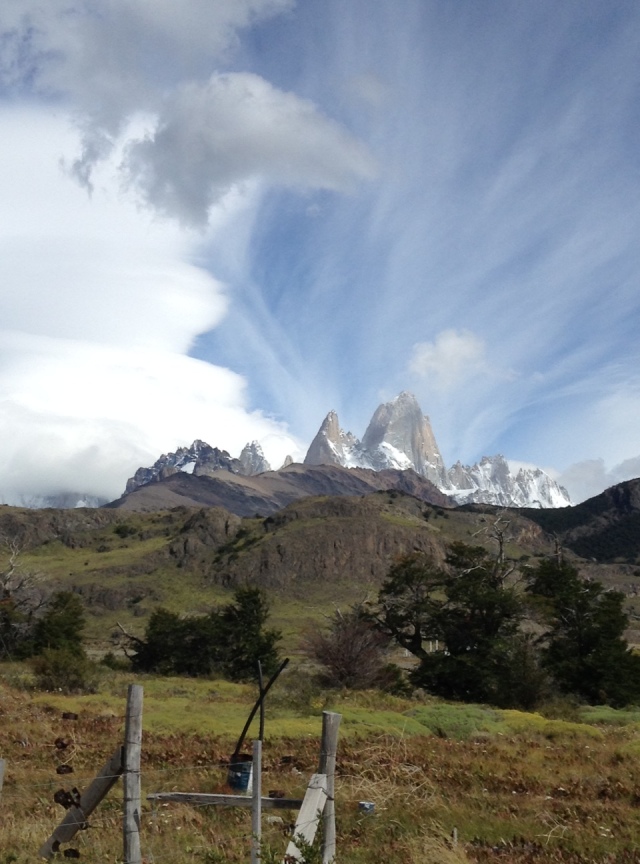
Monte Fitz Roy
We got into town on a Friday afternoon, found camping, ate food, checked out the Glacier National Park headquarters, wrote some postcards, and generally farted around for hours before we checked the weather around 7pm and realized that next four days were going to be the only time we could realistically do the four-day trek we had come to do. After that was more than a week of consistent 30-60 knot wind. Forget about a rest day. The trek in question, the Huémul circuit, requires some gear (harnesses and carabiners) for a Tyrolean traverse (kind of like a zip line) of two rivers, and so we sprang into action and ran all around town several times until we had tracked down all the gear in two different rental places. At 9:30 pm we had a plan and some carabiners and it was still light out and we went to pack our packs and cook dinner.
So on Saturday morning we pieced together the rest of our gear, bought a map, stored our auxiliary backpacks at the bus station, and started hiking. It was a gentle hike, with meadows and lenga forests and a glimpse of a glacier.
I was glad for a relatively easy day, since I was feeling quite tired after our sprint out of Chile and several late nights of hitchhiking and then trek planning. The campground was sheltered in a forest and someone had built a whole series of walls out of tree branches to provide some wind protection.
The second day of the hike was much wilder. It started nearly straight away with the first Tyrolean.
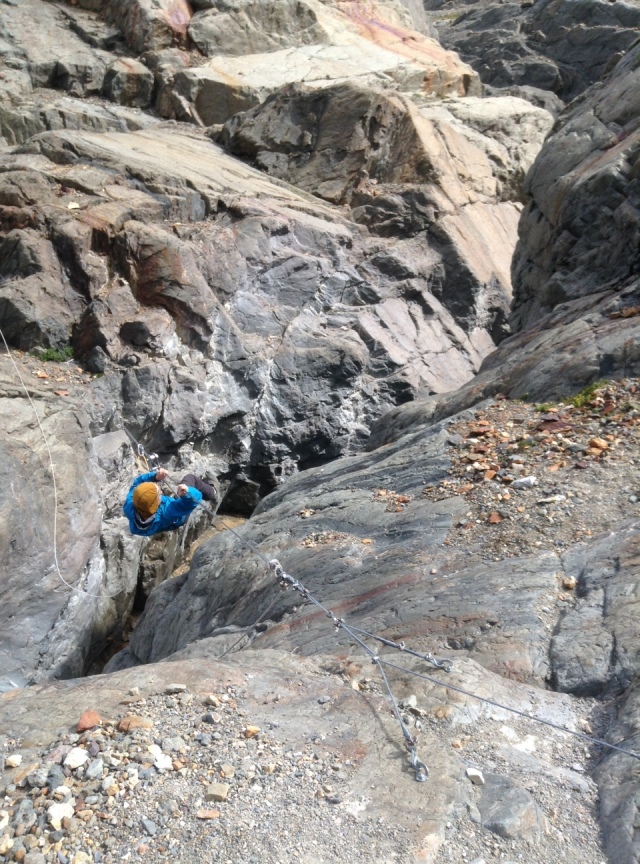
Here is Eli hauling himself over a river on a Tyrolean traverse.
From there we hiked a short distance toward the distant Paso del Viento, or Windy Pass, which seemed to be high up on a scree slope and past a glacier and a lake. The “trail,” which was more like a series of cairns playing Where’s Waldo on a backdrop of endless other cairn-sized rocks and stacks of rocks, led us to walk across part of the glacier, which was awesome. It was a non-technical crossing and mostly felt like walking on flat ice and sand, and there were periodically deep blue holes (or deep blue deep holes) in the ice that you could sink a trekking pole into and not feel the bottom. Which to me meant they probably led all the way to China. We didn’t know how long to stay on the glacier, and the alternative was traversing the moraine above it, which is the part of the scree slope that still has ice under it. I could hear the water running under the rocks, and occasionally a rock would slide down as the water and ice shifted beneath it. When it seemed like we had been on the glacier long enough, we saw some other people transitioning to the scree, and so we did too.
It was nerve racking to walk across so many loose rocks. I found out quickly that stepping on small rocks would cause them to come loose and slide downhill, taking other rocks and maybe your foot with it. Stepping and scrambling on the biggest rocks we could find, Eli and I picked our way all afternoon up and up across scree until the trail finally firmed up and started behaving like solid ground. We kept walking up and up toward the pass.

Eli at the Paso del Viento. The glacier in the midground is the one we walked across, and the valley below the furthest visible lake is where we had camped.
As we descended from the pass, my mind was occupied by three things. First, the southern ice cap was coming into view and it was spectacular.
Second, it was really really windy and starting to sprinkle. Third, the lower we dropped into the valley, the more difficult it was to keep track of the trail. We knew our campsite was somewhere in the valley on the far side of the pass, and we knew there was a sort of trail somewhere, so we took turns standing still at the last visible cairn while the other went wandering around looking for the next cairn. Between calculated wanderings and some serious study of the topo lines on the map, we slowly and surely made it to camp with plenty of daylight to spare. There were already several parties camped, and so we chatted with people in English and Spanish in the cooking shelter. There was a group of three Israelis, a pair of Argentines, a group of six Argentines, and a pair from the US, recent Stanford grads.
The wind blew hard enough that night to push one wall of the tent all the way to the other wall inside, and blew some rain in under the vestibules, so we woke up in a small puddle but with the tent entirely intact. I have to say, despite my many frustrations with my recently and rapidly deteriorating tent (all the zippers have since stopped working reliably and there’s some structural Gorilla tape on the ridge pole sleeve), it has always and continues to hold up admirably in strong wind.
Eli and I were the only ones to get an early start on day three, and we didn’t see anyone else on the trail all day. The rain cleared up by 10 and there was snow on the surrounding peaks and a rainbow over the ice cap.
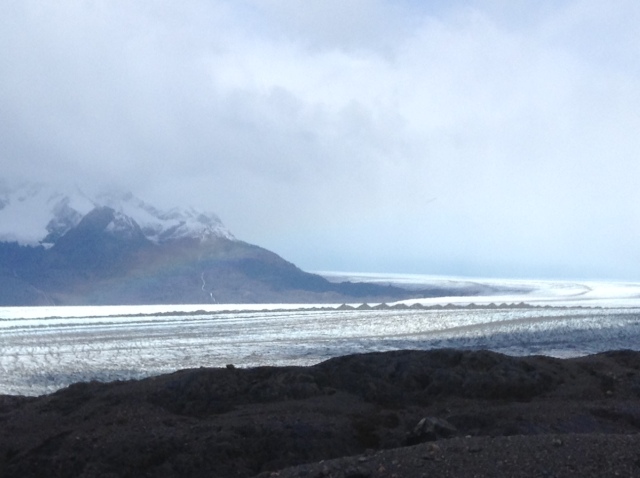
We continued through the valley all morning and started climbing after lunch. We had another pass, Paso Huémul, to cross that day. It was lower but much windier and I felt like I was being blown straight uphill for most of the climb. At least it was a tail wind! The view from the top showed all the swooping streaks of sediment on the ice.
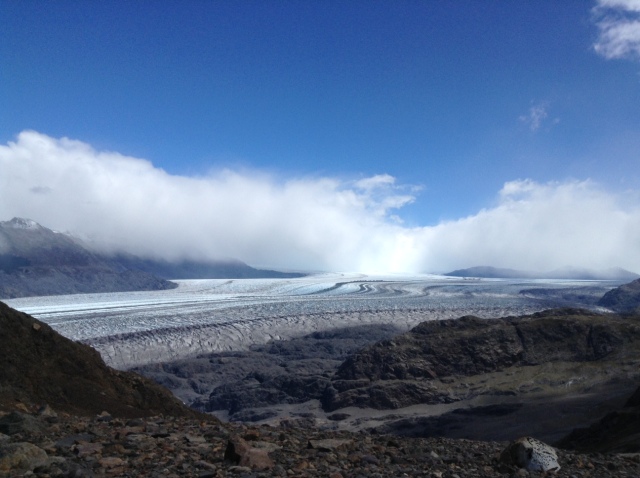
On the descent, I hit my trekking pole on a lenga trunk and it bounced up and whacked my left eye pretty hard. Luckily, my eye and my vision were okay, and I came out with a nasty purple eyelid and a scrape on the bridge of my nose, and nothing worse.

Purple Eye
The experience of hurting myself in a place so remote – a two-day walk from the nearest road – was pretty intense. Looking back on it, the injury was not a result of any particular mistake or poor judgement, just a moment of looking forward on the trail instead of down toward my feet, which means it would have been hard to avoid. As I sat on the trail and held a cold compress to my face, I realized that I could have hurt myself in any number of more serious ways, and I felt my mortality pretty strongly.
The rest of the day was sunny and warm and we were in the lee of the mountain, protected from wind. I picked my way slowly and carefully down the rest of the near-vertical descent toward Lago Viedma and eventually a bay full of icebergs appeared below us.
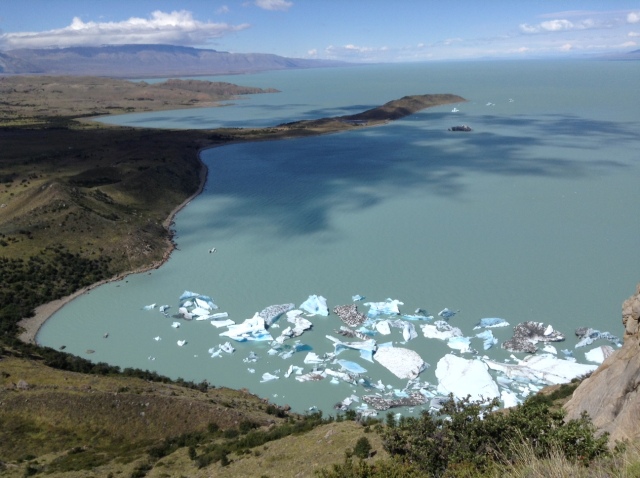
We reached camp around 5pm, and it was on a protected beach on that very bay, Bahía Témpanos, which literally means “Iceberg Bay.” We could see the mouth of Glaciar Viedma hiding behinds the ‘bergs.

We hung the tent up to dry, made dinner, and were nearly asleep around 9pm (despite it being fully light out still) when the other groups of hikers started rolling in.
The last day of the trek was long and flattish and exposed to the sun, and ended with a successful hitchhike about ten miles back to town. The highlights for me were a view of the glacier in the morning
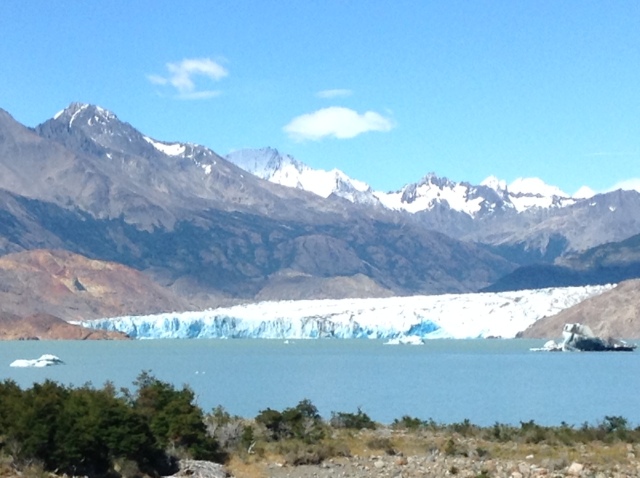
and the view of Fitz Roy on the way back to town in the evening.

The rest of our time in Chaltén we spent at the lovely Camping La Torcida in town, and at various free campgrounds in the forest around town. At La Torcida, the manager Paulo noticed that we seemed a bit too focused on the details of itinerary and making sure we did everything right, and he told me, “Nora, you have to do what you want. These are your vacations. This is not the military.” It was those words that inspired Eli and me to bail on camping in the snow one night, and to spend more time eating pastries and empanadas in town instead.
On Tuesday we hitched a ride on an empty tour bus to El Calafate, where we met Lizzie and resupplied our store of dulce de leche (in the latest news on that front, it turns out that salted peanuts and dulce de leche are the most delicious combination of food possible).

Yesterday we all hitched out and saw that beautiful glacier Perito Moreno up close and personal.

Lizzie juggled while we waited for a ride.
We got a ride back to town with none other than the pair of Stanford grads we had met over dinner at the Paso del Viento shelter on our trek! They had just purchased a car so they could give rides instead of wait for them for their next three months of travel. I can’t say that I blame them. They recommended a bakery and Lizzie and Eli and I figured we might as well eat a pastry or three.*
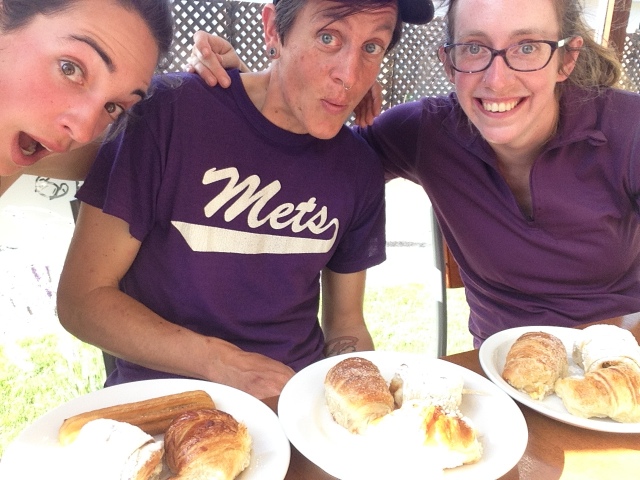
*a pastry or three each…
And that brings us to the present. If you have any questions or need dulce de leche serving suggestions, feel free to shoot me an email.
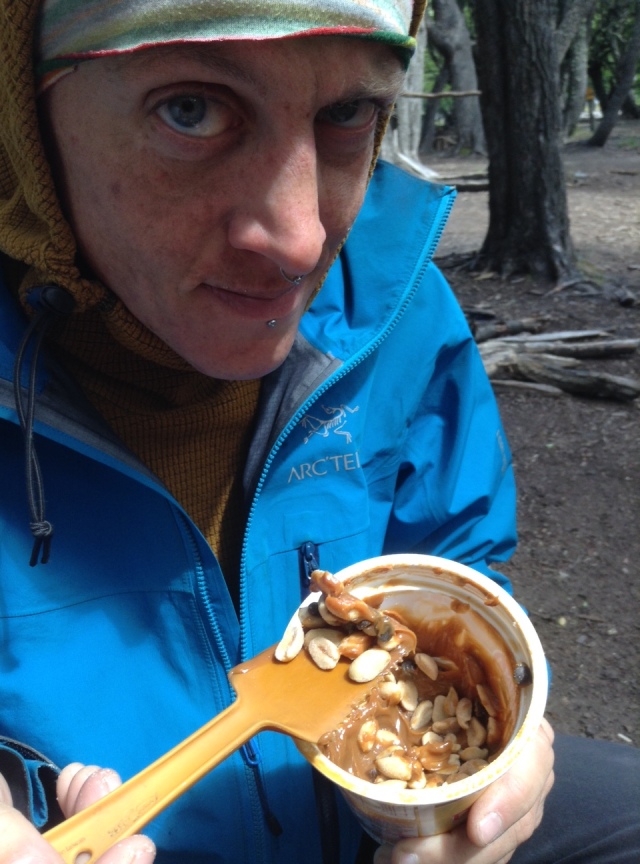
Dulce de Leche with Salted Peanuts









